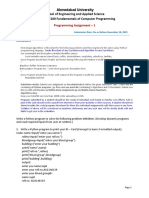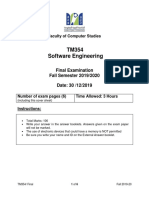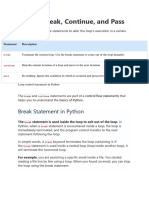0% found this document useful (0 votes)
86 views17 pagesPython Record1
The document contains 15 programming problems with their descriptions and sample code solutions. The problems cover basic concepts like displaying name and age, calculating area and perimeter, finding largest of two numbers, checking number type, swapping numbers, checking Armstrong number, calculating factorial, printing multiplication tables, finding sum of natural numbers, and printing numbers divisible by 7. For each problem, the description provides the objective, algorithms using steps, and code with comments to implement the solution.
Uploaded by
PriyanshuCopyright
© © All Rights Reserved
We take content rights seriously. If you suspect this is your content, claim it here.
Available Formats
Download as DOCX, PDF, TXT or read online on Scribd
0% found this document useful (0 votes)
86 views17 pagesPython Record1
The document contains 15 programming problems with their descriptions and sample code solutions. The problems cover basic concepts like displaying name and age, calculating area and perimeter, finding largest of two numbers, checking number type, swapping numbers, checking Armstrong number, calculating factorial, printing multiplication tables, finding sum of natural numbers, and printing numbers divisible by 7. For each problem, the description provides the objective, algorithms using steps, and code with comments to implement the solution.
Uploaded by
PriyanshuCopyright
© © All Rights Reserved
We take content rights seriously. If you suspect this is your content, claim it here.
Available Formats
Download as DOCX, PDF, TXT or read online on Scribd
/ 17























































































